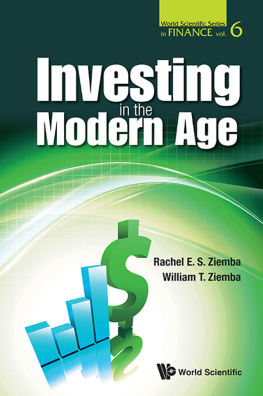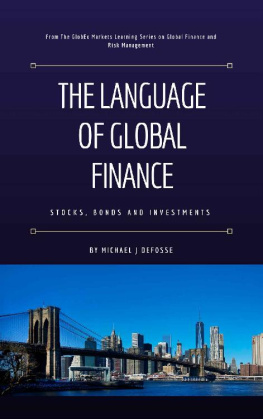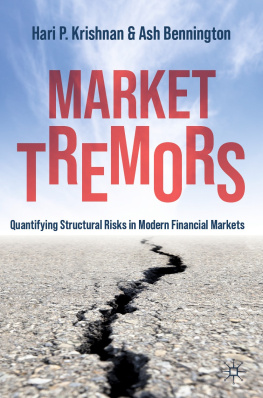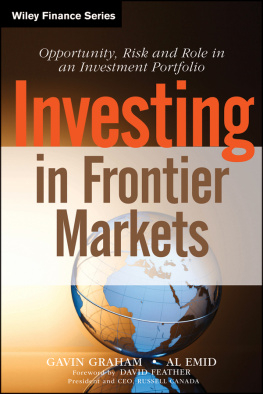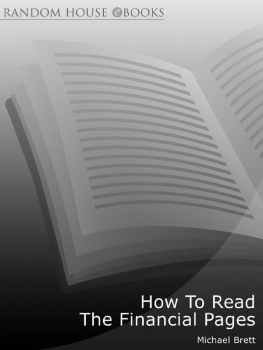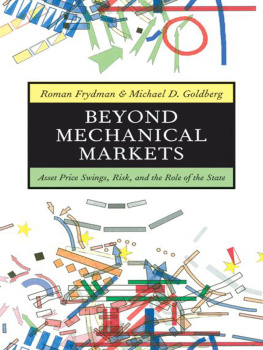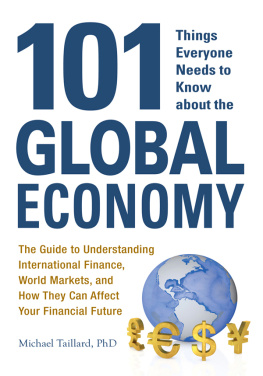Investing
in the
Modern Age

Investing
in the
Modern Age
Rachel E. S. Ziemba
Roubini Global Economics, UK
William T. Ziemba
University of British Columbia, Canada

World Scientific
NEW JERSEY LONDON SINGAPORE BEIJING SHANGHAI HONG KONG TAIPEI CHENNAI
Published by
World Scientific Publishing Co. Pte. Ltd.
5 Toh Tuck Link, Singapore 596224
USA office: 27 Warren Street, Suite 401-402, Hackensack, NJ 07601
UK office: 57 Shelton Street, Covent Garden, London WC2H 9HE
Library of Congress Cataloging-in-Publication Data
Ziemba, Rachel.
Investing in the modern age / Rachel E.S. Ziemba (Roubini Global Economics, UK) and William T. Ziemba (University of British Columbia, Canada).
pages cm
Includes index.
ISBN 978-9814518833 (hardcover : alk. paper)
ISBN 978-9814504744 (softcover : alk. paper)
1. Investments. 2. Investments, Foreign. 3. Risk management. 4. Investment analysis. I. Ziemba, W. T. II. Title.
HG4521.Z54 2013
332.6--dc23
2013011472
British Library Cataloguing-in-Publication Data
A catalogue record for this book is available from the British Library.
Copyright 2013 by World Scientific Publishing Co. Pte. Ltd.
All rights reserved. This book, or parts thereof, may not be reproduced in any form or by any means, electronic or mechanical, including photocopying, recording or any information storage and retrieval system now known or to be invented, without written permission from the Publisher.
For photocopying of material in this volume, please pay a copying fee through the Copyright Clearance Center, Inc., 222 Rosewood Drive, Danvers, MA 01923, USA. In this case permission to photocopy is not required from the publisher.
In-house Editor: Chye Shu Wen
Printed in Singapore
Dedicated to Sandra L Schwartz, our third family member, for encouragement, advice and help in all stages in the preparation of this book
Acknowledgements
We owe a great debt to Paul Wilmott for starting his wonderful magazine Wilmott. Since the magazine's launch in September 2002, Bill has had a regular column with Rachel guest writing her own or joint columns on a range of global financial issues. Paul and Wiley also kindly gave us access to the beautiful artwork of the magazine for use in this book which uses columns from mid 2007 to 2012 with a few others from earlier and some new chapters added for completeness. Our earlier book, Scenarios for Risk Management and Global Investment Strategies, Wiley, 2007, used columns from 2002 to early 2007, introducing some of the key themes we discuss in this volume. All chapters have been edited and updated to September 30, 2012.
Special thanks go to Dan Tudball, executive editor of Wilmott and Beth Gongde of Wiley for help in turning our draft columns into professional articles in the magazine. Liam Larkin who does the artwork for the magazine was very helpful in not only producing the original columns but also in providing them for our use in producing this book. Thanks go to the World Scientific staff including Zvi Ruder and Max Phua for providing us the opportunity to revisit this material in this book and for producing this volume.
Bill thanks the various organizations and universities who invited him to give talks on these subjects over the years and his coauthors who are cited in the text. These include talks at Oxford University, Imperial College, ICMA Centre of the University of Reading, University of Cyprus, KAIST in Korea, 7City-Wilmott, Stanford University, Massachusetts Institute of Technology, University of Washington, Fidelity Investments, Canyon Investment Advisors, RAB Hedge Fund, Chicago Quantitative Finance, Financial Management Association, European Financial Management Association, Renselalear Polytechnic Institute, Sabanci University, Luis Guido Carli University and The Reims Management School.
Rachel would like to thank a number of colleagues and mentors at Roubini Global Economics, particularly Nouriel Roubini, and Christian Menegatti, for supporting work that inspired many of the items in this book. Brad Setser introduced me to the art of sovereign balance sheet dissection that has framed my work on sovereign wealth funds. Questions from RGE colleagues, most notably Natalia Gurushina Gina Sanchez, Adam Wolfe and Maya Senussi as well as clients poked holes in some of my arguments and made them stronger. Thanks go to participants at talks at the New York University, Princeton University, London School of Economics, Oxford University, University of Edinburgh, CSIS, Chatham House, International Institute of Strategic Studies among others, where some of the ideas where first aired. I do not have space to list here the many friends who supported this work, either by reading draft pieces, helping to arrange meetings, providing places to stay or encouraging my ideas.
As with our last book, Sandra Schwartz has not only gone above and beyond to produce this book and the columns but has been a research colleague and sounding board on all the topics. Much of the quality of this book is due to her efforts with none of the mistakes. Without her this book would not have been possible.
Contents
Preface
This book discusses many key topics in investment and risk management, global economic situation and global investment strategies. The material in this book was largely written over the period of 200712, one of the most tumultuous times in global financial markets which called into question not only tenets of economic forecasting and also asset allocation and return strategies. We attempt to draw some conclusions on how the structural shifts currently underway in the global economy as well as cyclical trends will affect these industries, the globe and key sectors.
The various topics and case studies are relevant for hedge fund, insurance, pension fund, mutual fund managers and other investment professionals and investors. The book presents tools and case studies of real applications for analyzing a wide variety of investment returns and better assessing the risks which many investors have preferred to ignore in the search of returns. Many security market regularities or anomalies are discussed as is the process of building scenarios and using strategies to optimize returns. All the data in the book is current for the topics and dates discussed with updates to our publication date of September 30, 2012.
We are guided by the use of careful analysis to generate future scenarios. That is, what are the chances that various future events will occur over time? How should these events and their chances influence investment decisions? Assessing all possible outcomes is fundamental to risk management, financial engineering and investment strategies. Careful consideration of future scenarios in the macro outlook and micro level leads to better investment decisions and avoids financial disasters. We remain in a period where global growth is likely to be weak, and upside risks delivered by coordinated, concentrated policy responses - This adds to the complexity of anomalies and pricing in the markets.
Learning From Disasters
A key contribution of this book is both positive and negative case studies of great successes and blowouts to better assess explicit and implicit risks and mismatches in maturities and investment horizon. We discuss strategies used by the greatest investors to obtain their high returns. To do so, we analyze hedge fund concepts and performance including major fund disasters. Chapter 26 begins with a discussion of various ways traders lose money trading derivatives. These pitfalls remind one of what not to do to try to have successful trading. Some major disasters discussed are the Long Term Capital failure in 1998, an imported fear driven crash in 1997 that sunk the Niederhoffer fund, the 2006 Amaranth natural gas disaster and Socit Gnrale. These failures all involve over betting and not being diversified in all scenarios.

